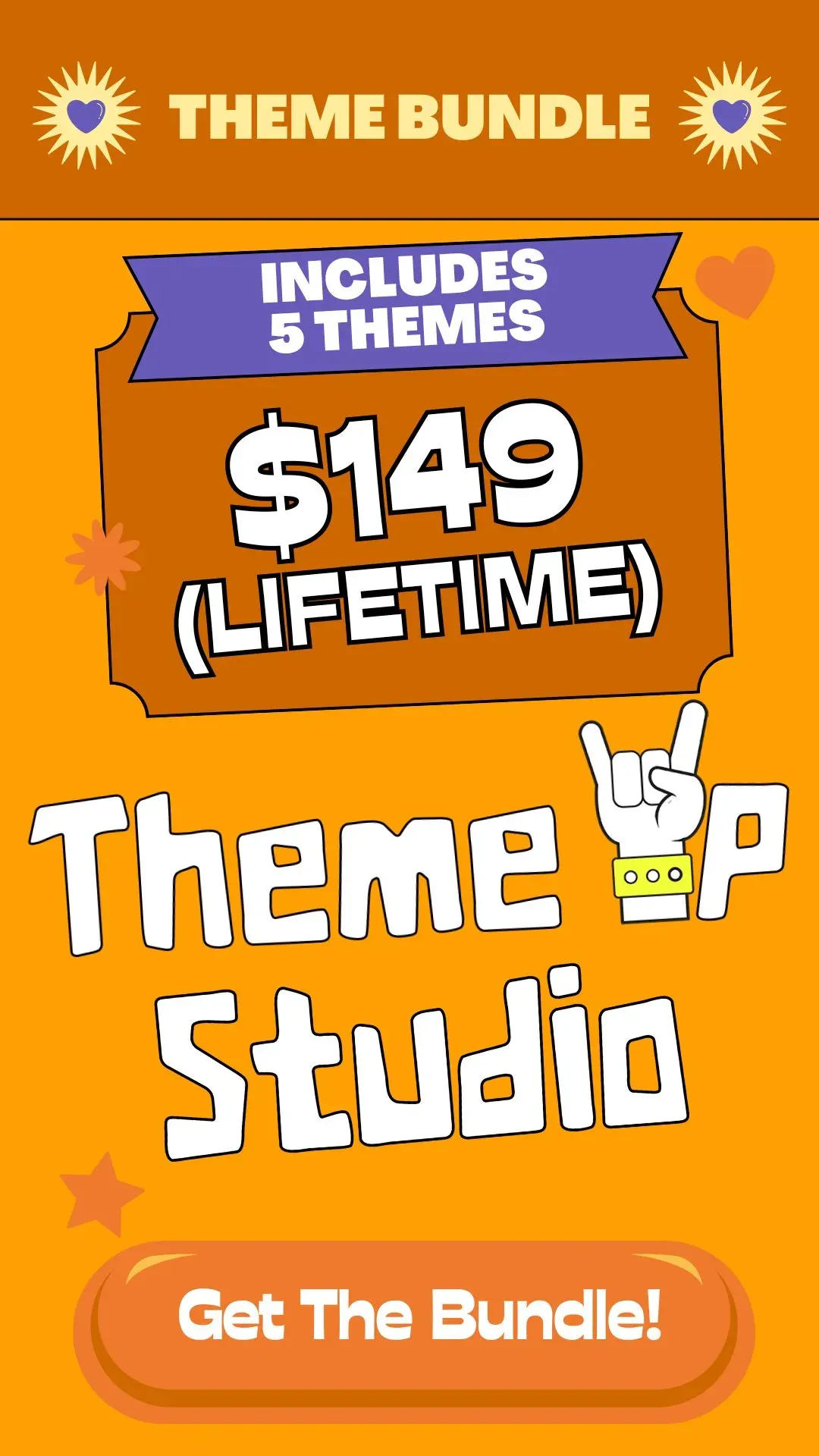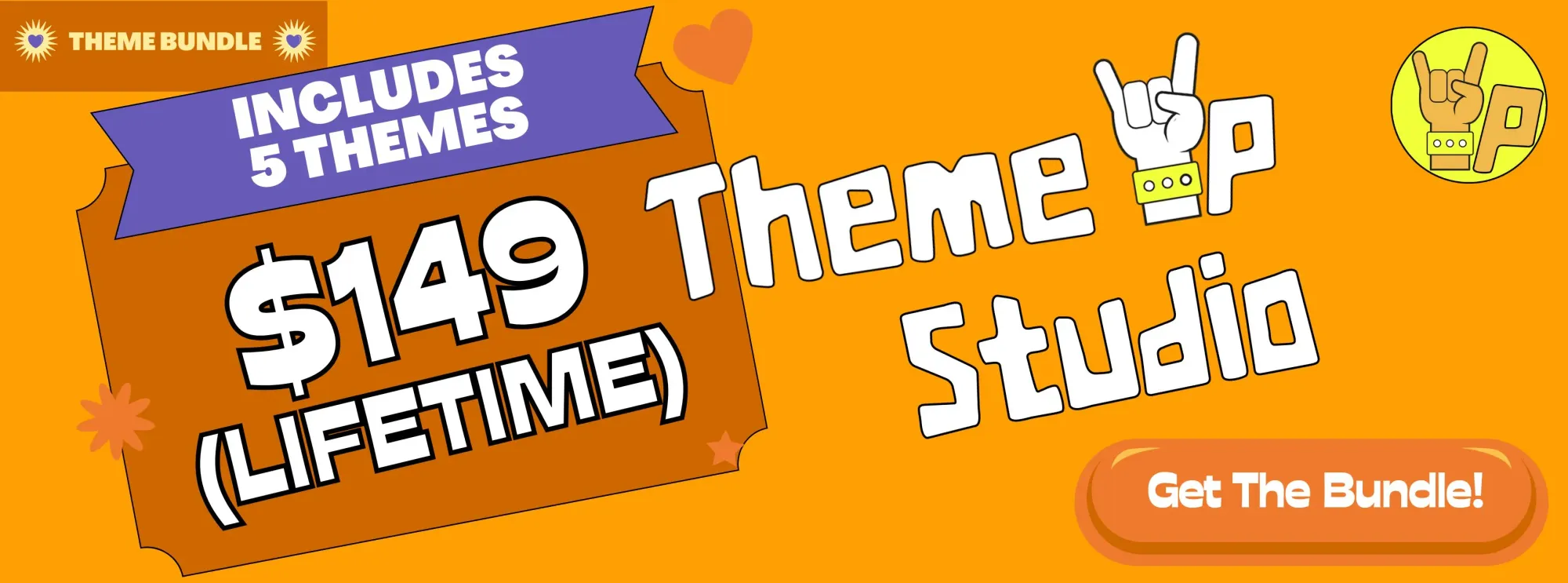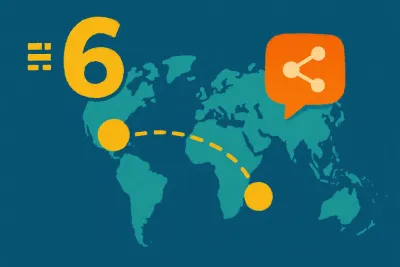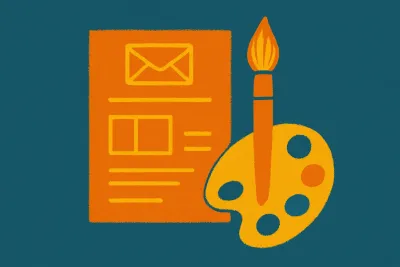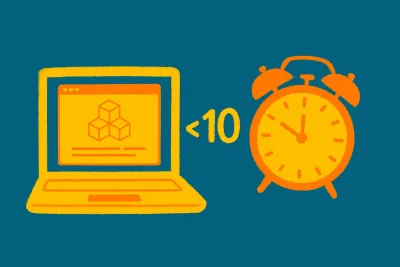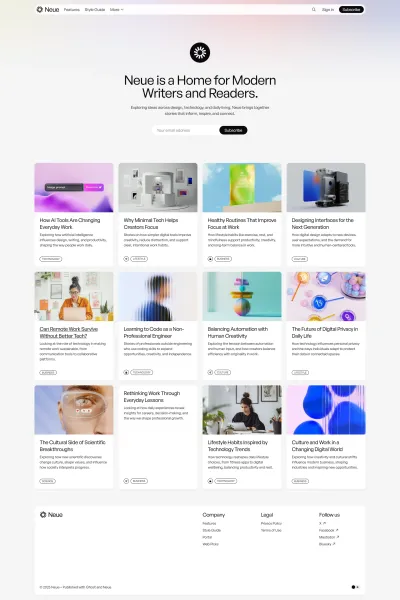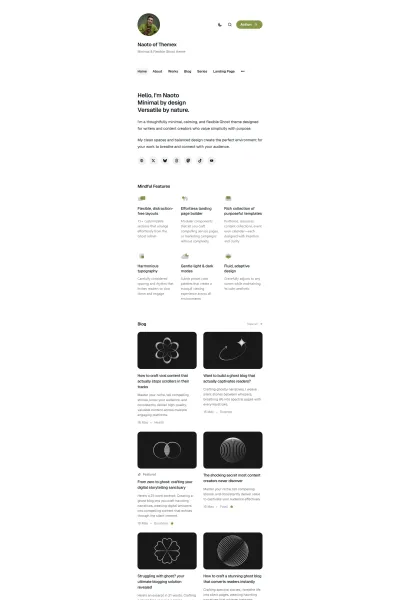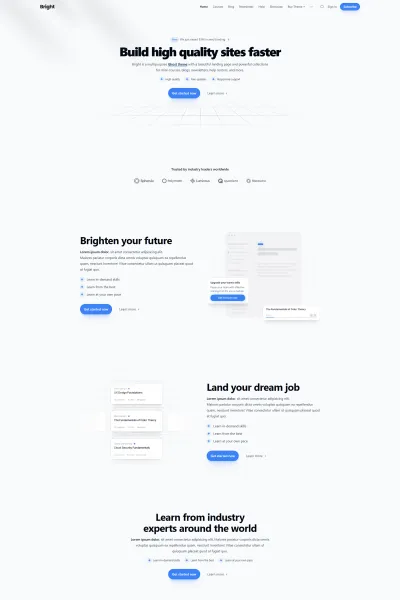This extensive guide explores proven strategies for growing your audience using Ghost CMS, combining both organic and paid methods. It covers building trust through high-quality, SEO-optimized content, converting visitors into subscribers with compelling lead magnets, leveraging social media and niche communities for broader reach, collaborating with influencers for cross-promotion, and creating an engaged community to drive word-of-mouth growth. It also explains how smart paid advertising (like social media ads and newsletter sponsorships) can accelerate discovery when paired with strong content. Featuring real-world examples like Maker Stations and Morning Brew, this guide provides a practical, actionable roadmap for bloggers, content creators, marketers, and newsletter publishers aiming to build a thriving audience on Ghost CMS.
Introduction
Building a successful blog or newsletter on Ghost CMS isn’t just about publishing great content – it’s also about getting that content in front of the right people. In today’s digital age, even the best-designed Ghost website can go unnoticed without active promotion.
Bloggers, content creators, marketers, and newsletter publishers all face the same challenge: how to cut through the noise and grow a loyal audience. The good news is that Ghost provides a powerful platform (with fast performance, built-in SEO, and integrated newsletters) that you can leverage for growth. The even better news is that there are proven organic and paid strategies you can adopt to accelerate your audience growth.
This comprehensive guide will walk you through those strategies – from content marketing and SEO, to social media, communities, email lead magnets, referrals, and paid promotions – all tailored for Ghost CMS users. We’ll also look at real-life examples and case studies (no fluff or hypotheticals) to see what works in practice. By the end, you’ll have an actionable game plan to attract more readers, subscribers, and paying supporters on Ghost.
Let’s dive in with a quick look at how successful audience growth typically happens, and then explore actionable tactics step by step.
Understand the Audience Growth Funnel
Growing an audience is often described as moving through a funnel – a model that outlines the journey from a person’s first encounter with your content to becoming a loyal subscriber or customer.
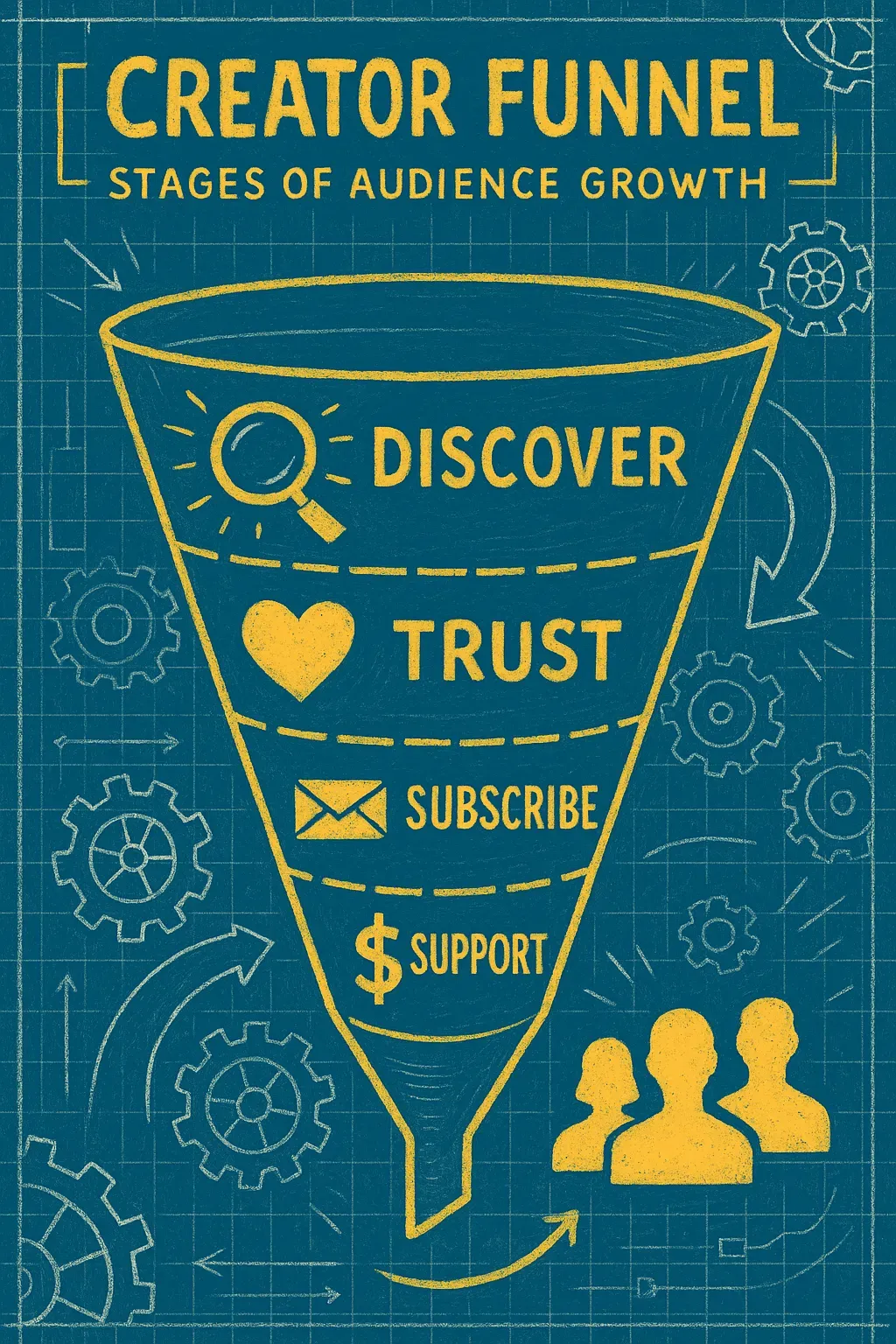
Ghost’s team calls this the creator content marketing funnel, with four key stages:
Stage 1: Discovery
People find out you exist. This is achieved through free, easily accessible content on channels where your potential audience already spends time (e.g. social media posts, short blog posts, videos, etc.). At this stage, removing barriers is crucial – the more shareable and visible your content is, the better.
Stage 2: Trust
People engage with your longer-form or core content and start to trust your expertise. Here you deliver real value (e.g. in-depth blog articles, podcasts, or videos) that showcase your knowledge and personality. Consistency and quality are key to building credibility.
Stage 3: Access
You invite your most interested readers to become part of your community by subscribing or signing up. In Ghost, this often means converting casual readers into members (free or paid) who get access to member-only content or your email newsletter. The goal is to obtain their email address – an “owned” point of contact – so you can engage more directly. For example, YouTuber Ali Abdaal prominently features a newsletter signup on his site, encouraging fans to join 170,000+ readers of his weekly email.
Stage 4: Purchase
Finally, a portion of your audience values your content so much that they’re willing to pay for exclusive benefits. This could be a premium Ghost membership, a paid newsletter tier, courses, or other products. While monetization is beyond just “audience growth,” it’s often the result of successfully nurturing an engaged audience through the first three stages.
Why does this funnel matter? Because successful audience growth strategies target each stage of the audience lifecycle. We need tactics to attract new visitors, build trust through content, convert visitors into subscribers, and energize subscribers to spread the word or eventually buy.
As we explore specific strategies, we’ll note which stage(s) each tactic supports. Keep this framework in mind – it ensures you’re guiding people from merely finding you to truly following you.
“Creating content is only one-half of the creator puzzle. Distribution is the other half.”
This reminder from the Ghost team highlights that making great content isn’t enough – you also must actively help people find it. In fact, many creators spend as much time promoting content as they do creating it. The following strategies will help you master that crucial distribution half of the equation.
Now, let’s break down the proven strategies – both organic and paid – that will grow your Ghost site’s audience at each stage of the journey.
Craft High-Quality Content Optimized for SEO (Build “Trust” and Attract “Discovery”)
The foundation of any audience growth plan is outstanding content. High-quality content is what turns one-time visitors into loyal readers (Stage 2: Trust) and gives people a reason to share or recommend you to others (fuelling Stage 1: Discovery via word-of-mouth).
In a world where over 91% of B2B marketers and 86% of B2C marketers use content marketing, simply having a blog isn’t a differentiator – excellent content is. Here’s how to ensure your Ghost publication delivers value and is primed to be discovered through search engines:
Choose a Clear Niche and Solve Real Problems
Don’t try to be everything to everyone. Focus on topics you know deeply and that align with your strengths and passions. This was a key lesson for Maker Stations, a Ghost-powered blog. Instead of chasing a generic trend, the creators (Ilya and Lena) built content around a problem they personally cared about – showcasing inspiring home office setups.
By “solving your own problem,” you’re likely addressing a genuine gap that others have too. This relevance will attract a dedicated niche audience who finds your content uniquely useful.
Deliver Exceptional Value with Long-Form Content
To build trust, go beyond superficial posts. Create in-depth articles, guides, or resources that become the go-to reference on a topic. These pieces often serve as “pillar content.” For example, writer Julian Shapiro highlights comprehensive guides on his homepage – such as “Writing Well” or “Growing a Startup” – positioning them as must-read pillars.

Such authoritative content not only impresses readers but also tends to rank well in search engines, bringing in steady organic traffic. Aim to produce content that people would pay for – but you’re giving it away for free. This quality creates a strong impression on new visitors and encourages sharing.
Optimize for Search Engines (SEO):
Ghost CMS is pretty SEO-friendly out of the box – it generates clean URLs, has fast loading times, and supports meta tags and sitemaps. But you should still intentionally optimize your content so that people searching on Google can find you.
Start with keyword research: use tools or simply Google’s autocomplete to find what terms your target audience uses. Then optimize your post titles, headings, and meta descriptions around those keywords (naturally, without keyword stuffing). Ensure each post has a unique, descriptive title and excerpt.
Ghost allows editing your SEO meta data in the post settings – take advantage of that to write compelling snippets that will make searchers click through.

Site Speed and Mobile Optimization
A fast, mobile-friendly site helps both user experience and SEO. Ghost’s themes are generally lightweight and responsive, which is a big plus.
Keep it that way: avoid overly bloated scripts or large images that slow down pages. This matters because 53% of mobile visitors will abandon a site if it takes longer than 3 seconds to load, according to Google. A speedy Ghost site can dramatically reduce your bounce rates.

Given that more than half of web traffic is mobile, a snappy site ensures you don’t lose potential subscribers before they even see your content.

On-Page SEO Best Practices
Incorporate basic on-page tactics: use header tags (H1, H2, H3) to create a logical structure (Ghost’s editor makes it easy to format headings).
Include internal links between your posts so readers (and Google) can find related content – for example, when you mention a concept you’ve written about before, link to that post. This increases time on site and passes SEO value between pages.
Also consider adding alt text to images for accessibility and slight SEO benefit.

While Ghost doesn’t have a plugin ecosystem like WordPress, many themes come with SEO considerations built-in. For instance, ensure your theme outputs article structured data or Open Graph tags (most official Ghost themes do).

If you want to go the extra mile, Ghost has an Integrations section where you can add code for Google Analytics, schema markup, etc. But for most creators, focusing on great content and basic keyword targeting will yield 80% of the SEO results.
Leverage Ghost’s SEO Features
Ghost’s simplicity means less technical hassle for you. It automatically generates a sitemap.xml for search engines and has built-in support for canonical tags to avoid duplicate content issues. It also handles basic schema for your posts. Make sure you fill out your Ghost Publication Settings (via Ghost Admin) with your meta title and meta description for the homepage, and your social accounts – these will be used in metadata and help your branding in search results.
The Ghost team has published a Beginner’s SEO Guide for publishers which can be helpful. But the key takeaway: Ghost will handle the heavy lifting, just focus on producing relevant, valuable, and keyword-conscious content consistently.
In short, content is king, but quality and relevance crown the king – especially on Ghost, where you likely run a focused publication rather than a general-purpose site. By deeply understanding your audience’s needs and delivering content that meets those needs (better than anyone else out there), you lay the groundwork for organic growth. Your posts become assets that attract traffic via Google, get shared on social media, and give people a reason to subscribe for more.
Real-life example – Maker Stations’ content focus
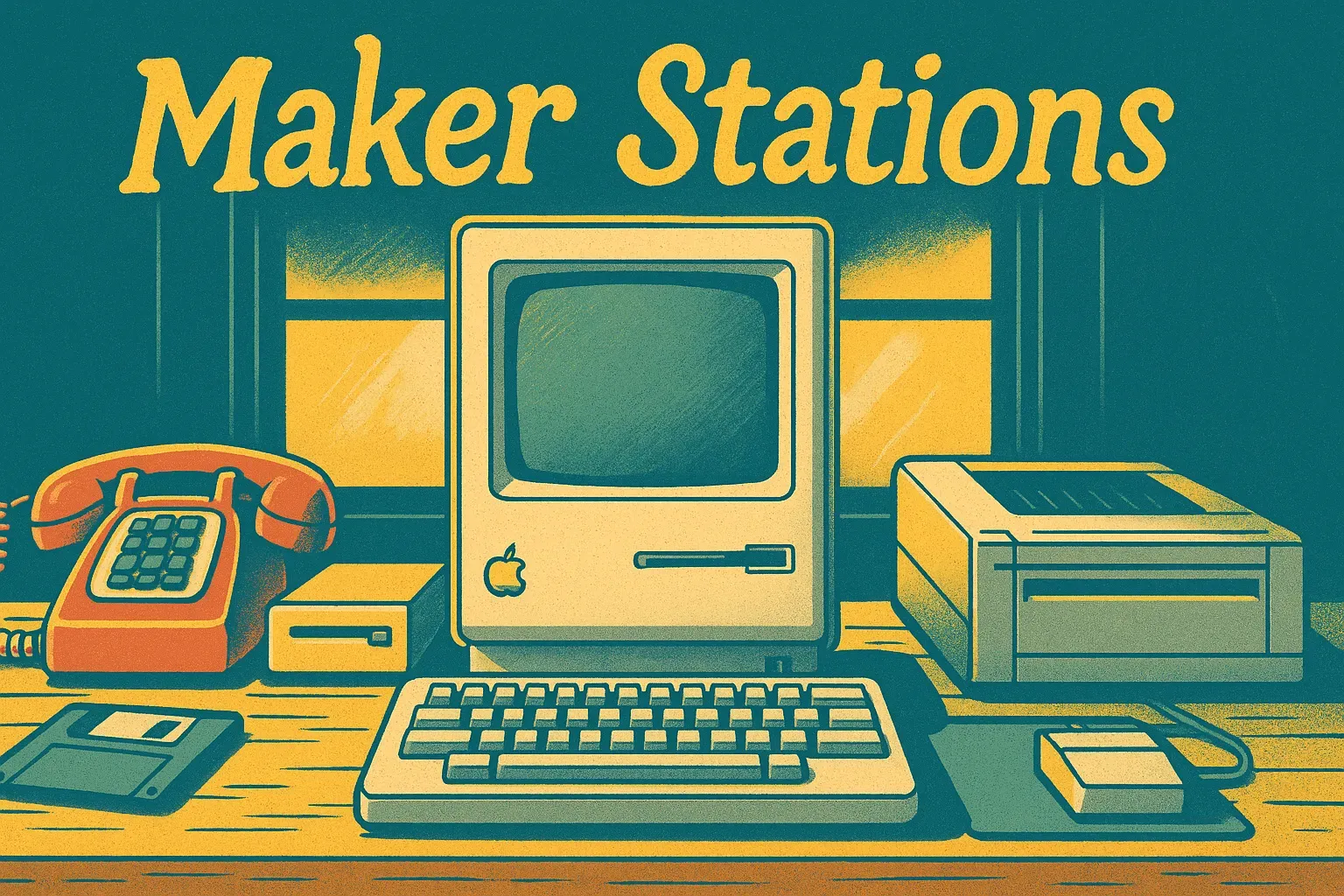
Maker Stations, a Ghost-powered blog showcasing workspaces, reached its first 100+ subscribers by focusing on high-quality niche content. Rather than chasing trends, they “played to their strengths” and created posts featuring beautifully photographed desk setups with detailed commentary.
This unique content struck a chord with readers interested in home office inspiration. Many of those initial readers gladly subscribed for updates. Within 5 months of launch, Maker Stations grew to 169 subscribers by consistently delivering this niche content and then leveraging that base (as we’ll see in other strategies).
Convert Visitors into Subscribers with Email Signups and Lead Magnets
Once you start attracting visitors to your Ghost site (whether through search, social, or word-of-mouth), the next critical step is to capture those visitors as subscribers (moving from Discovery to Access in the funnel).
In Ghost CMS, building an email subscriber list is seamless – it’s one of Ghost’s killer features for creators.
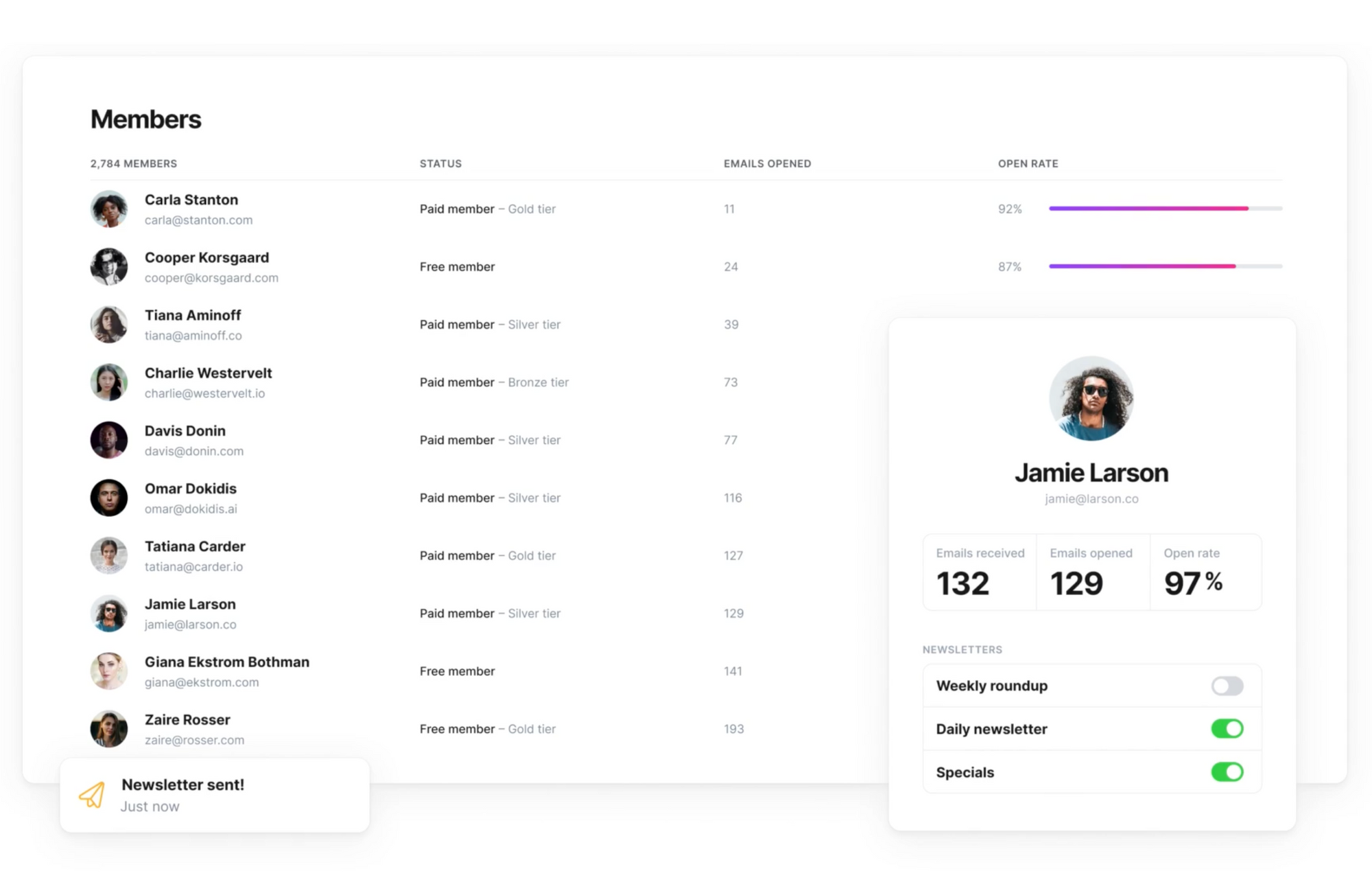
By turning casual visitors into email subscribers or free members, you gain a direct line to engage them again and again, rather than hoping they’ll remember to revisit your site.
Here are strategies to boost conversions from visitor to subscriber:
Use Ghost’s Portal and Signup Forms Prominently
Ghost comes with a built-in membership feature called Portal, which makes it easy to add signup forms to your site. Make sure you enable Portal (via Ghost Admin settings) so that a floating “Subscribe” button is visible in bottom right of your website.

For example, many Ghost themes show a subscribe button in the top-right by default. You can also insert signup forms within posts or at the end of articles using the Portal snippet. The key is to make it dead-simple for a reader to subscribe the moment they decide they like your content.
Don’t hide it. Place CTAs (calls to action) in logical places: top bar, end of each post, and maybe even mid-post for long articles. Ghost’s Portal requires no coding – within a few clicks you’ll be inviting visitors to join your newsletter or free membership.

Communicate a Strong Value Proposition
People rarely give out their email without a good reason. Tell them why they should subscribe. What will they get? It could be exclusive content, a weekly roundup, a free e-book, or simply the convenience of getting your new posts via email. Make that benefit clear in your signup prompt.
For instance, instead of a generic “Subscribe for updates,” try something like “📬 Join 5,000+ readers and get my new productivity tips in your inbox each Tuesday.” Be direct and use action-oriented language.
Also, if you offer paid subscriptions alongside free, reassure readers that the free signup is valuable on its own (and perhaps mention it’s free). The goal is to reduce hesitation and answer “What’s in it for me?” immediately.
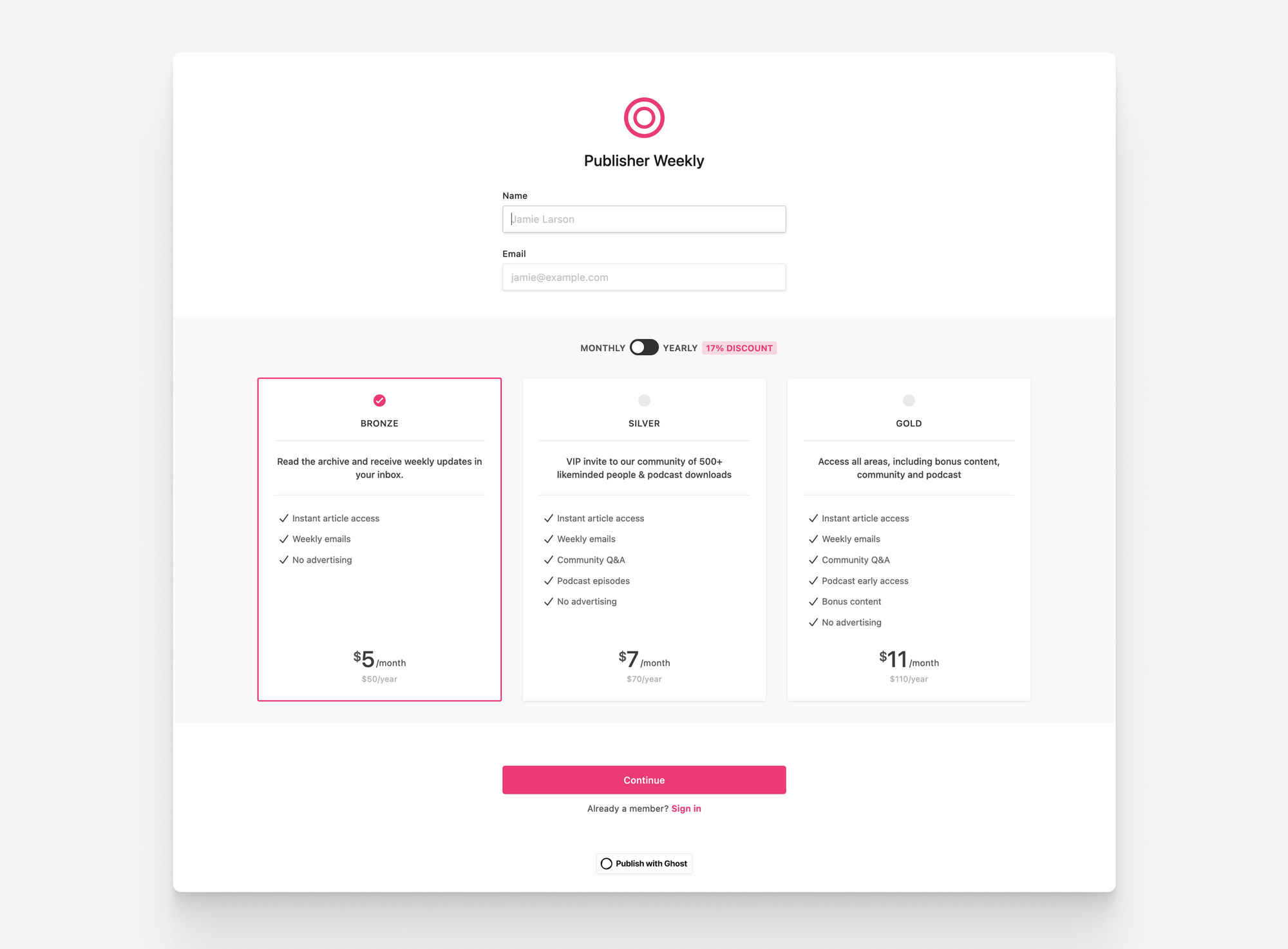
Offer a Lead Magnet (Content Upgrade)
A lead magnet is a free bonus or resource people receive in exchange for signing up to your list. This could be an e-book, a checklist, a template, an email mini-course, a PDF guide – anything your audience would truly value.
Lead magnets are extremely effective at accelerating email signups. They tap into psychology: people find free, useful things hard to resist. In fact, lead magnets have been shown to boost conversion rates dramatically. Marketing expert Brian Dean used a content upgrade (a type of lead magnet offered within a blog post) and raised his email opt-in rate from 0.5% to 4.8% – a 785% increase.
That’s the power of offering extra value. On Ghost, you can deliver lead magnets easily: for example, create a page or post that is members-only (free tier) containing the download link to your e-book or resource, so when someone signs up, they automatically get access.
You can even automate a welcome email (via Zapier) that includes the lead magnet link. Make sure the lead magnet is high quality – something people would have been willing to pay for. This not only increases signups but ensures you attract subscribers who are genuinely interested in your niche.

Placement & Promotion of Lead Magnets
Once you create a lead magnet, promote it everywhere on your Ghost site. Mention it in a hello bar (“Free 10-page guide for new subscribers!”), include a callout in relevant blog posts (“Enjoying this article? Download the complete checklist as a PDF by subscribing.”), and have a dedicated landing page for it.
In fact, creating a landing page solely for collecting emails in exchange for the lead magnet is a great idea. Ghost allows creating landing pages – you can design a simple page describing the free resource and have the signup form there. Then drive traffic to this page via social media or even paid ads (more on that later).
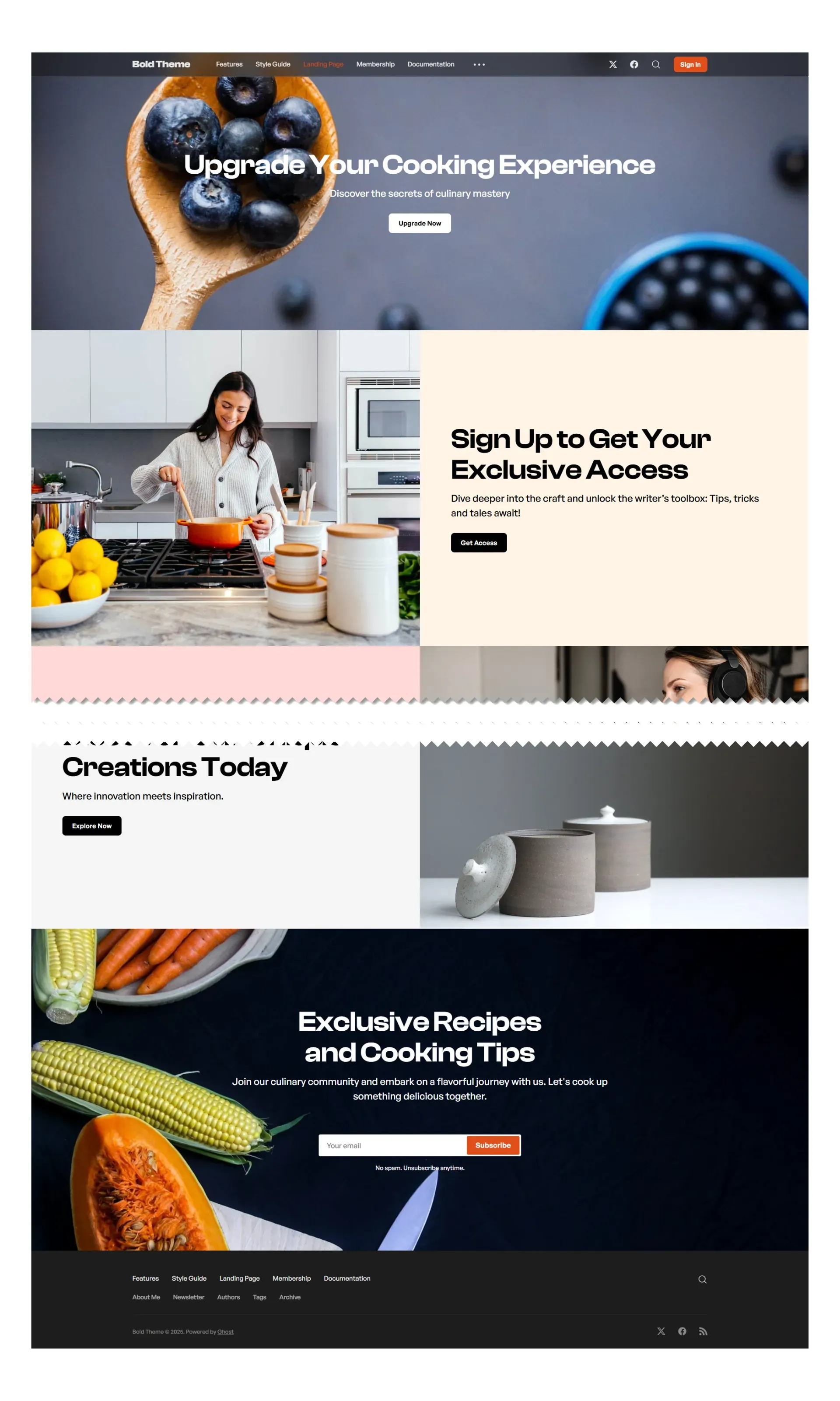
Strong dedicated landing pages can significantly increase newsletter signups. The process is: visitor clicks your promotion for the lead magnet, goes to landing page, enters email, and is either given access immediately (if you set the content as accessible to members) or gets an email with it. It’s a tried-and-true funnel for growing an email list quickly by providing immediate value.
Provide a Preview of Subscriber-Only Content
If you offer some posts as members-only (even if those members are free), tease them to new visitors. For instance, you might have certain in-depth articles or tutorials marked for members. When a non-subscriber lands on those, Ghost will show a prompt to sign up to read more.

Make sure the teaser (the portion visible before the paywall) is enticing – explain what’s inside or share a snippet that hooks the reader. The more tangible and transparent you are about the benefits, the more people will subscribe.
Do Things That Don’t Scale (Personal Outreach)
When you’re just starting out, one of the fastest ways to get your first subscribers is also the most old-fashioned: ask people one by one. This might mean personally emailing friends, colleagues, or social media followers who you think would enjoy your content, and inviting them to join your Ghost newsletter.
The founders of Maker Stations did exactly this. They reached out individually to friends and former colleagues, asked if they’d find the blog useful, and got their first 15 subscribers just from people they knew.
Your circles of influence are your secret weapon when growing an online audience
Don’t be shy – many people will happily support your new venture if you simply ask. This approach doesn’t scale and won’t get you thousands of subs overnight, but it’s incredibly effective in the early stage (and virtually cost-free).
Each early subscriber gained through personal effort is important, and those people can become your advocates down the line. So send a friendly note announcing your Ghost publication to your network, post about it on your personal social media, and so on. Those first 5, 10, 50 subscribers often come one at a time.
Be Patient and Aim for Steady Growth
It’s worth noting that audience growth is usually linear at first – it might trickle in single digits. That’s normal. “Real growth occurs much slower than viral articles and gurus would have you believe. It’s linear (5, 10, 15)…”. Focus on getting the right people to subscribe, and don’t be discouraged by small numbers initially. They compound over time. The key is to make sure each new subscriber has a good reason to be there (they value your content), because then they’ll open your emails, engage, and eventually help bring others.
In summary, converting visitors to subscribers is about offering clear value and lowering the friction to sign up. Ghost CMS gives you the tools (Portal, member content, email delivery) – use them to your advantage by offering something compelling (like a lead magnet or exclusive content) and asking every visitor to join in a clear, friendly way.
An email list is hugely valuable: you own that connection to your audience (unlike, say, social media algorithms, which can change at any moment). Plus, email subscribers are often your most engaged fans and the ones most likely to share your work or buy from you later.
Real-life example – Lead magnet success
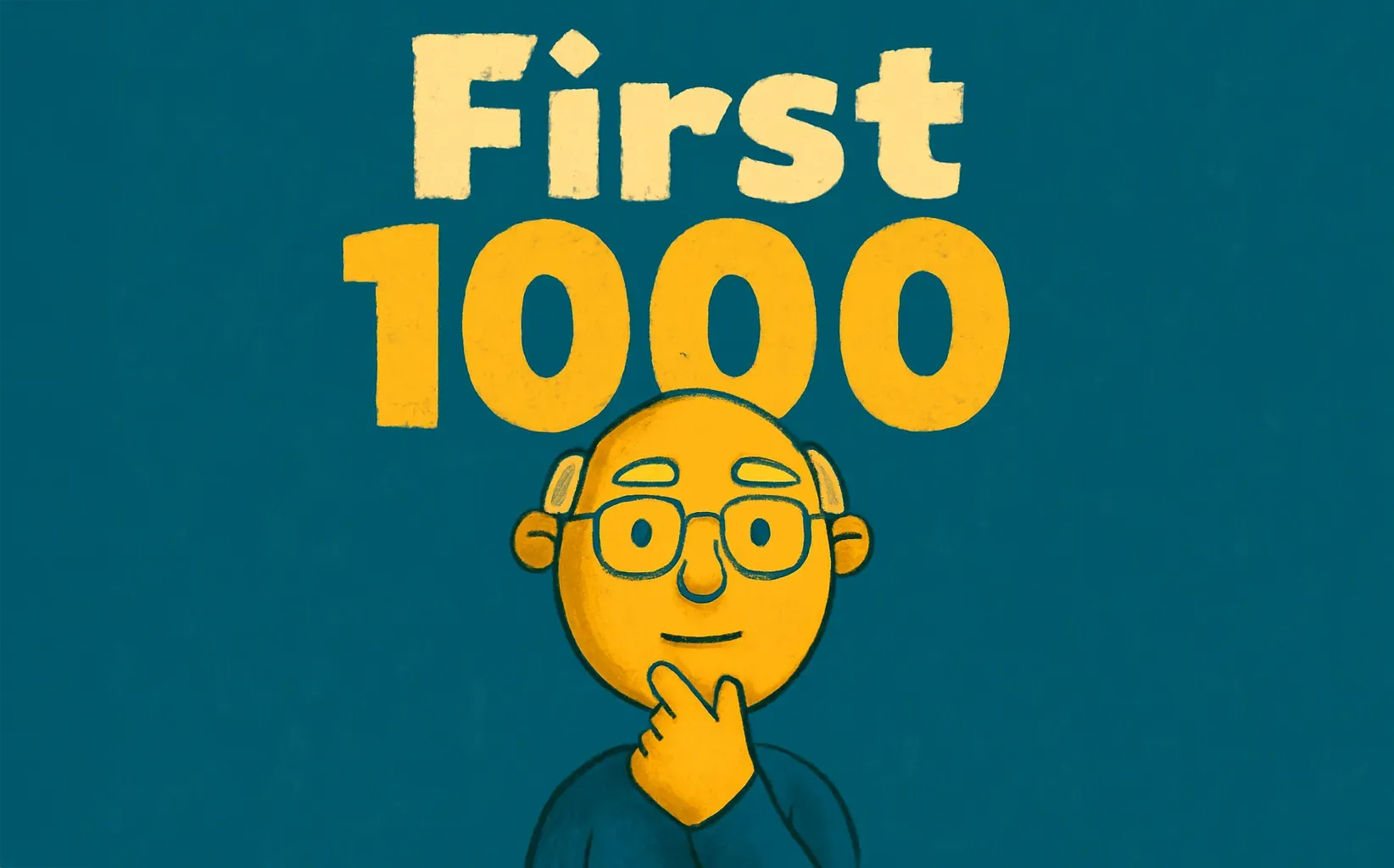
Ali Aboueletta, author of the “First 1000” newsletter, shared how he gained over 300 new subscribers in 3 months by leveraging online communities and offering a valuable resource. He created content that resonated in niche groups (which we’ll discuss next) and used a content upgrade to entice sign-ups. By identifying a specific need of his audience and addressing it with a lead magnet, he accelerated his list growth and quickly climbed from the low hundreds toward that 1,000 subscriber milestone. This illustrates the combo effect: great content pulls people in, and a juicy lead magnet converts them into long-term followers.
Leverage Social Media and Niche Communities for Organic Reach
With your content engine running and a system in place to capture subscribers, the next focus is promotion and distribution: getting more people to discover you (Stage 1: Discovery) and continually engaging the broader community in your niche. Social media and online communities are powerful (mostly free) channels to expand your reach, if used strategically.
Here’s how to tap into them without spinning your wheels:
Find Your Audience’s Hangouts
First, identify where your target readers already congregate online. Are they active on Twitter? Do they frequent certain subreddits or niche forums? Are there Facebook or LinkedIn groups in your topic area? Perhaps there are Discord servers or Slack communities relevant to your industry. Go where they are.
For example, if you run a tech startup blog on Ghost, Hacker News or /r/startups might be prime spots. If you write about design or photography, Instagram or Behance could be key. Don’t try to be everywhere; zero in on the two or three platforms or communities that matter most to your readers.
Be an Active Participant, Not a Spammer
A golden rule of community promotion is to share information, not just self-promote. Become a genuine, helpful member of the community. That means answering questions, contributing ideas, and engaging with others’ posts – without immediately plugging your own content.
Over time, as people recognize your expertise, you can start naturally sharing your relevant articles from your Ghost blog when they answer someone’s question or add to a discussion.
Regularly Contribute in Niche Communities
Beyond ad-hoc sharing, consider making it a routine to engage in a few key communities. For example, commit to answering one question per day on a relevant subreddit or Quora, when you have content that can help. Whether it’s a weekly Twitter chat, a subreddit, a specialized Facebook group, or Ghost’s own forum for publishers, find your tribe and be present.
Go All-In on One Social Platform
Social media can be a huge time sink if you try to maintain a strong presence on every network. A smarter approach for solo creators or small teams is to pick one primary social platform and double down on it.
Maybe you love Twitter’s fast-paced interaction, or you find LinkedIn has your professional audience, or you enjoy making short TikTok videos that tie into your blog content. Wherever it is, aim to master one platform’s culture and features.
For example, if Twitter is your platform, you might post daily tweets or threads with insights from your latest Ghost article, engage with influencers in your space via replies, and use relevant hashtags. Over time, you could build a following that regularly clicks through to your Ghost posts.
If Instagram is your choice, perhaps you share compelling infographics or stories derived from your content, and use the link in bio or swipe-up (if available) to drive traffic. The key is consistency and authenticity on that platform. So choose your channel and make it a part of your daily routine to post and interact there in conjunction with your Ghost content schedule.
Repurpose and Cross-Post Your Ghost Content
To maximize reach, adapt your Ghost blog content into formats suitable for different channels. This is sometimes called the “Waterfall Content Strategy” (popularized by Gary Vaynerchuk).
For instance, if you have a 2,000-word blog post, you could create a Twitter thread summarizing the key points (with a link to “read more”), a short TikTok or Reels video talking about one of the tips, a series of graphics for LinkedIn highlighting statistics from the post, and maybe even a 5-slide mini presentation on LinkedIn or SlideShare. This lets you meet users where they are and in the format they prefer, while all roads still lead back to your Ghost site.
By slicing and dicing your Ghost articles into multiple pieces, you extend their lifespan and reach. Just ensure you tailor each piece to the platform (e.g., casual tone and hashtags on Twitter, visually appealing carousel on Instagram, etc.). Over time, this significantly increases the odds of new people discovering you.
Engage Your Early Audience to Share
As you start to accumulate followers and subscribers, encourage them to spread the word. Simple ask prompts can work, like at the end of your newsletter emails include a note: “Enjoyed this issue? Please forward it to a friend who’d find it useful!” or tweet something like “If you liked this post, I’d love a retweet!”.
Word-of-mouth is incredibly powerful. In fact, many of the biggest newsletter successes (like Morning Brew, which we’ll discuss soon) grew largely through readers referring others.
Even without a formal referral program, just personal recommendations from your fans will bring highly qualified new readers. Make it easy: Ghost’s email templates automatically include a web link version of the newsletter; you can encourage readers to share that. Or, if you have a particularly share-worthy quote or insight in your post, create a quick graphic or quote-tweet and provide it to your followers to share. Cultivating this sharing behavior in your community can dramatically amplify your reach in niche networks where paid ads might never penetrate.
Directory Listings and Aggregators
As part of community outreach, don’t overlook newsletter directories and content aggregators. These are platforms specifically meant to help audiences discover publications. Submitting your Ghost newsletter to directories like Newsletters.co, Inbox Stash, or The Sample can get you in front of interested readers browsing those sites.
Many directories are free – you just fill out info about your newsletter. While the influx from any single directory might be modest, collectively they contribute to steady growth. Similarly, if there are content aggregator sites for your domain (e.g., Hacker News for tech, Designer News for design articles, Medium for general interest if you cross-post there), share or submit your top content occasionally.
Being featured on a high-visibility aggregator can spike traffic and net new subscribers. For example, Maker Stations’ launch on Product Hunt (a popular tech/product community) earned them ~140 upvotes and even their first paid subscriber. That exposure put them in front of early adopters they wouldn’t reach otherwise. Look for similar opportunities relevant to your niche.
Case in point – Organic community growth
Maker Stations’ team reached out to owners of workspaces on Reddit and Instagram, interviewed them for their Ghost blog, then “politely asked them to share it with their own network, as well as link to it from their website.” The result was a win-win: the featured creators got a profile piece, and Maker Stations got exposure to entirely new audiences when those creators shared the article.
Rinse and repeat, this tactic significantly grew their readership in the home office niche. They also engaged on Product Hunt, as noted, and leaned into the desk setup communities. These grassroots efforts in relevant communities were the engine of their early audience growth – far more than any formal marketing.
It underscores that being active in your niche’s circles and encouraging others to share your work can snowball your presence. Every niche online has its own “watering holes”; find them and become a helpful regular there.
Collaborate and Cross-Promote with Partners and Influencers
Growing your audience doesn’t happen in a vacuum – often, it accelerates when you tap into other people’s audiences through smart collaborations. This could mean guest posting on another site, interviewing an influencer on your Ghost blog, or doing a newsletter cross-promotion. The right partnership can introduce your content to hundreds or thousands of new potential fans who already trust the person recommending you.
Here are some collaboration strategies:
Guest Blogging on Established Sites
Writing guest articles for other publications or blogs in your niche can drive targeted traffic back to your Ghost site and boost your credibility. Identify a few reputable sites or newsletters that target a similar audience (but aren’t direct competitors). Pitch them a high-quality article idea, mentioning you can provide original content. Many blogs accept guest posts because it’s free content for them – as long as it’s truly valuable and not self-promotional. In your author bio (or somewhere in the post if allowed), include a link to your Ghost newsletter or a compelling lead magnet.
For example, you might write a how-to article on a major industry blog, and in the bio say, “Jane Doe is the author of The Productivity Weekly on Ghost – join 2,000+ subscribers to get actionable tips (and receive her free ebook).” Readers who enjoy the post will often seek you out. This strategy not only brings new visitors, but it also typically earns you a backlink to your site (good for SEO authority).
Invite Influencers or Experts into Your Content
Another approach is to involve other voices in your Ghost publication. This can be interviews, Q&As, or expert roundup posts where you feature insights from multiple people. When you publish the piece, all those people who contributed have a vested interest in sharing it (since they’re highlighted).
For instance, if you run a marketing blog on Ghost, you could interview a well-known marketer about their growth tactics. Once published, that person is likely to share the interview with their followers, instantly exposing you to their audience.
Ensure the content is well-crafted and flattering to the guest so they want to share it. It’s a great way to get on their radar as well. Even mid-tier influencers with a few thousand followers can pull new readers to your site when they broadcast an article they are featured in.
Name-Drop and Notify Influencers
Even if you don’t formally interview someone, you can still leverage influencer reach by mentioning them in your content. For example, if you write a post “5 Lessons I Learned from Famous Designer X’s Portfolio,” you could then tag or message that designer on Twitter saying “I wrote about what I learned from your work – hope you enjoy!” If they find it worthwhile, they might share it with their followers.
The key is to do it tactfully and ensure that your content genuinely adds to or praises the influencer’s work (nobody will share something that’s inaccurate or critical of them). A single retweet or shoutout from an industry influencer can flood your site with traffic and subscribers.
Cross-Promotions with Other Newsletters/Blogs
Find peers at a similar growth stage and propose cross-promoting each other. For instance, you can do a newsletter swap: you feature a blurb about their newsletter in one of your emails, and they do the same for you. This works best when the audiences overlap in interest. It’s essentially a barter of exposure.
Communities like Swapstack or newsletter writer groups can help find partners for this. You could also simply reach out directly to another Ghost publisher you admire (Ghost has a vibrant community of creators) and suggest a shout-out exchange. Make sure to disclose to your audience in a genuine way – e.g., “I want to share another newsletter I think you’ll enjoy…” so it feels like a recommendation, not an ad.
When done right, both parties gain new subscribers. Another idea is doing a guest appearance in each other’s content: you write a guest section in their newsletter one week and vice versa.
Joint Webinars, Podcasts or Live Streams
If you’re comfortable in other media, consider teaming up for a live event or podcast. For example, a webinar on a topic related to your content, co-hosted with another expert, can attract both of your audiences (and each of you will likely gain some of the other’s followers afterward). At the end of the webinar, you can plug your Ghost site/newsletter for those who discovered you through the event.
Similarly, appearing on each other’s podcasts (or co-hosting a special episode) works. These formats allow deeper engagement and can rapidly build trust with a new audience, who may then become subscribers. Always have a clear call-to-action for listeners/viewers to subscribe to your Ghost newsletter for more content.
Utilize Ghost’s Integrations for Collaboration
Ghost has integration with tools like Zapier, which means you can automate some cross-posting or sharing tasks. For example, you could set up Zapier so that when you publish a new post, it automatically posts to a certain Slack community or Discord channel if allowed. Or integrate with Twitter to auto-share at least a link (though tailor your manual post for better engagement).
Additionally, Ghost’s Members API and features could be used creatively – e.g., offering a group of collaborators access to a private Ghost content hub. While this is more technical, just know Ghost is extensible if you have specific cross-site ideas.
Remember that collaborations should be mutually beneficial. When reaching out, highlight what’s in it for the other person’s audience, not just “promote me.” Perhaps you have data or an interesting story to share with their readers. By genuinely collaborating (not just advertising), you’ll forge relationships that could pay dividends long-term, beyond just the immediate follower boost.
Proof in practice – The power of referrals and partnerships
One of the most famous examples of audience growth through referrals is Morning Brew, a business newsletter. By implementing a robust referral program (where subscribers got rewards for referring friends), Morning Brew skyrocketed from 100k to 1.7 million subscribers in 18 months, with 30% of those new readers coming via referrals.
Over 300,000 people have referred someone to Morning Brew, and today ~20% of their new sign-ups still come from these referrals. While Morning Brew’s program is formal (with milestones like free stickers, mugs, etc., for certain referral counts), the core idea is that existing audience members can effectively market for you.
You can emulate this on a smaller scale: for instance, set up a simple referral incentive – “Refer 5 friends to subscribe, and get a shoutout or free bonus article.” Ghost doesn’t yet have a built-in referral tracking feature, but you can use a tool like FirstPromoter or Viral Loops which integrates with Ghost to manage referrals.
Just note that referral programs “require a lot of resources” and are not a magic bullet for everyone. They work best when you already have an engaged base and a reward structure that aligns with your brand (Morning Brew gave out swag that their business-minded readers loved).
For smaller creators, simpler partnership steps like guest posts and shout-outs are easier to start with than a full-blown referral system. However, keep the spirit of referrals in mind: encourage and reward your existing fans to spread the word. That might even be as simple as publicly thanking people on Twitter for sharing your newsletter (positive reinforcement). When people feel like part of your growth journey, they’re excited to help it along.
Encourage Word-of-Mouth and Community Building (From “Trust” to “Advocacy”)
We’ve touched on word-of-mouth via referrals and sharing, but it’s worth zooming out to the broader concept of community building. A loyal audience can evolve into a community that not only consumes your content but actively promotes and even contributes to it.
Ghost is a great platform for fostering a community around a publication, thanks to its membership features and the ability to host member-only spaces or discussions (with the right theme or integrations).
Here’s how nurturing community can grow your audience:
Engage with Your Readers One-on-One
In the early days especially, make an effort to respond personally to comments, emails, and social media interactions from your readers. If a subscriber replies to your newsletter, reply back. If someone comments on your Ghost blog, answer them.
This kind of personal touch turns casual readers into true fans who feel seen. Those fans are much more likely to stick around and tell friends. It may seem tedious as you grow, but even a short, thoughtful response can mean a lot to a reader. It’s about building relationships, not just an audience statistic.
Create a Space for Reader Interaction
Depending on your audience, consider giving them a place to talk to each other. This could be a comment section on your posts, a Discord server, a Facebook group, or a private forum. Some Ghost publishers have launched Circle communities for their members. If your readers start to connect with each other, your “audience” transforms into a community. That community will have more inertia – people come not just for your content but for the network of like-minded individuals.
It also increases word-of-mouth: people love to invite others to communities that they enjoy. For example, if you run a Ghost-powered cooking newsletter, a members-only Discord for recipe exchange can become a selling point that existing members invite their foodie friends to join (after subscribing). Just be sure to set clear community guidelines to keep the space positive and valuable.
Host Events or Challenges
Another way to spark word-of-mouth is by hosting community events (virtual or in-person if feasible). This could be a live AMA (Ask Me Anything) session for your subscribers, a 30-day challenge related to your topic (e.g., a writing challenge if you blog about writing), or a webinar/workshop exclusively for members. These kinds of events make your existing audience feel special and more engaged, and when you announce them publicly, it can attract new folks who want to take part.
For instance, an email newsletter could announce: “This month, join our 4-week fitness challenge (subscribers get access to our tracking app and community forum). Sign up by Friday to participate.” Non-subscribers who see that might subscribe to get in on it. Additionally, participants will talk about the challenge elsewhere, bringing you more visibility.
Contests and giveaways (briefly mentioned earlier) also fall here – they inject energy and give your community something to share widely.
Embrace Slow, Steady Growth & Consistency
It might sound counterintuitive, but one of the “strategies” for growth is to not focus on growth alone – focus on consistency and quality, and let growth follow. In a recent Ghost newsletter issue, Claire Zulkey (Inbox Collective) argued that for some indie publications, prioritizing content and community over aggressive growth can actually be the right move. That is, if you serve your existing audience extraordinarily well, they become your evangelists.
An engaged group of 500 subscribers can be more powerful than 5,000 disengaged ones. So ensure you’re consistently delivering value to those you have: stick to a regular publishing schedule, maintain your content quality, and keep interacting. Over time, this “slow and steady” approach often leads to compound growth as each new person who finds you stays and tells others.
It’s perfectly okay to grow “organically” in the truest sense – one person at a time – because each person is part of a growing base that sustains your project.
Monitor Feedback and Adapt
A community will often tell you what they want more of (or less of). Use Ghost’s member analytics and any feedback channels to gauge what content resonates most. Ghost has compelling dashboards that show you where your new subscribers are coming from (which referral sources, and even which post made them subscribe). This is incredibly useful data.
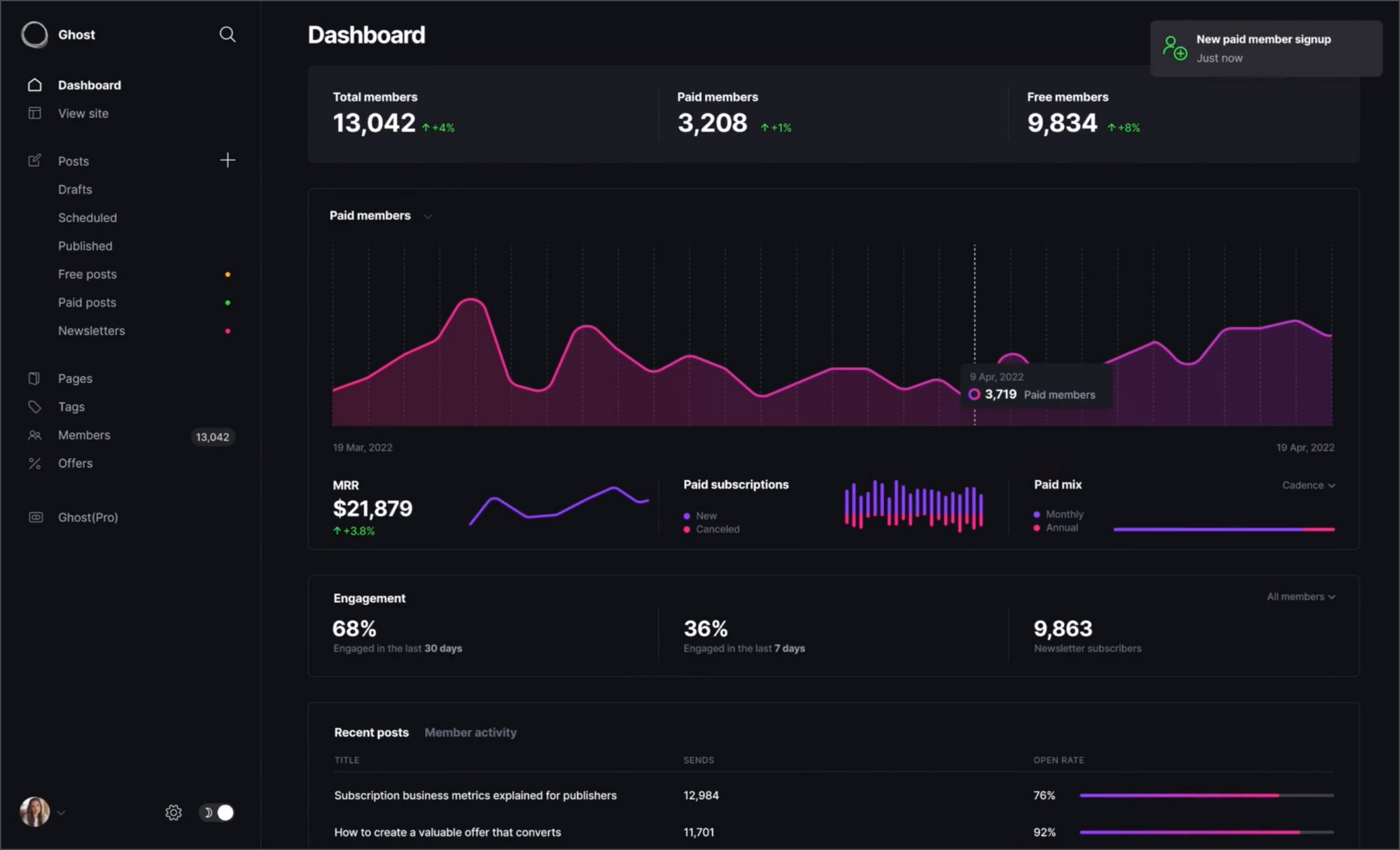
If you see, for example, that a lot of members joined after a particular post or via a particular community, that’s a cue to double down on that topic or channel. Likewise, track email open rates or click rates – if certain articles get higher engagement, produce more of those. By listening to your audience’s behavior and feedback, you can refine your strategy for greater growth. Essentially, let your community guide you to product-market fit in terms of content.
At its heart, word-of-mouth is about delighting individuals so much that they naturally spread the word. Ghost CMS gives you an advantage here because it’s built around the notion of membership and belonging – you can convert readers into members, and perhaps members into a tight-knit community. When people feel like they are part of your journey (and not just passive consumers), they will proudly champion your publication to others.
One more inspiring example: TheSkimm (a popular daily newsletter) grew to millions of readers in part by fostering a community of “Skimm’bassadors” – superfans who volunteered to promote the newsletter in their circles in exchange for perks and a title.
This is an advanced form of community advocacy, and while you might not formalize it at small scale, you can still nurture informal ambassadors. Identify your most engaged readers (perhaps those who often reply or comment) and consider personally reaching out to thank them. Those relationships can turn into partnerships or at least ongoing advocacy.
To wrap up this section, remember the adage: “100 true fans are worth more than 1,000 passive readers.” By focusing on your true fans and giving them avenues to connect and contribute, you’ll set into motion a virtuous cycle where your audience growth comes more and more from within – from fans bringing new fans – which costs nothing and is extremely effective.
Invest in Paid Advertising and Sponsorships (Fuel for Faster “Discovery”)
All the strategies so far have been primarily organic (earned through effort, not dollars). Organic growth is sustainable and builds a strong foundation, but it can be slow. That’s where paid promotion comes in as a booster.
If you have a marketing budget, even a modest one, investing in paid channels can accelerate your audience growth by reaching people you couldn’t reach otherwise. Ghost CMS publications can absolutely benefit from ads – whether that’s social media advertising, search engine ads, or sponsoring content on other platforms.
The key is to spend wisely where you’re likely to find your target audience, and to have a clear goal (e.g., getting newsletter signups vs just traffic).
Here are effective paid strategies:
Social Media Advertising
Running targeted ads on social platforms can bring in new readers at a predictable cost. For example, Facebook Ads (which also run on Instagram) allow you to target by interests, demographics, behaviors, etc. You could target people who like pages related to your niche.
A common approach is to create an ad that offers your lead magnet or promotes your newsletter directly: “Join my free weekly newsletter on [topic] and get [lead magnet].” The ad would click through to your Ghost landing page or a signup form. The cost for each subscriber will vary, but many newsletter marketers see costs in the range of $1–3 per subscriber acquired via Facebook ads.
One real experiment by a marketer showed they got subscribers for about $1.28 each on one ad set (and $2.50 on another). So with $100, you might get 40–80 new subscribers. The advantage is speed and reach – you can get in front of thousands of people in days.
Twitter Ads similarly can promote your profile or tweets to gain followers or clicks, though some find Twitter’s ad platform a bit less ROI for newsletter signups. LinkedIn Ads are more expensive, but if your content is B2B or career-focused, they might yield high-quality subscribers (albeit maybe costing $5+ each).
A smart technique on Twitter (X) that doesn’t cost money is using the Twitter lead gen card functionality: Ghost actually has an integration where you can link Twitter to your Ghost newsletter so people can subscribe with one click from your Twitter profile. Make sure to explore that if Twitter is big for you.
Google Search Ads
Google Ads can put your content at the top of search results for certain keywords. This is especially useful if you have valuable content or a newsletter on a topic that people actively search for.
For instance, if you run a Ghost blog about Photoshop tutorials, you might advertise on keywords like “free Photoshop tips newsletter” or “Photoshop tutorial blog.” When someone searches that, your ad appears and can direct them to sign up.
Search ads can be cost-effective if you target niche keywords with clear intent, but avoid broad expensive terms. Also, consider Google Display Network for retargeting: you can show banner ads to people who visited your Ghost site but didn’t subscribe, reminding them to come back and sign up. Retargeting often has a low cost per impression and can nudge warm prospects.
Newsletter Sponsorships and Paid Cross-Promos
A highly effective way to get in front of relevant audience is to sponsor another newsletter. Many independent newsletters (especially on platforms like Substack, Revue, or Ghost) sell sponsorship slots. Typically, you pay a fee and the newsletter’s author will include a blurb about your newsletter or content in their email to subscribers.
If you find a newsletter that has, say, 5,000 opens on average and their sponsorship rate is $20 per 1k, you’d pay around $100 to reach those readers with a dedicated blurb. If your content aligns well with their interests, this can bring a surge of subscribers.
For example, a gardening newsletter sponsoring another larger homesteading newsletter could yield hundreds of signups from one send. Marketplaces like Paved help connect sponsors with newsletters and give typical pricing.
Alternatively, approach newsletter authors directly for a deal. When doing this, make your blurb compelling – it should focus on what value readers will get by clicking/subscribing, not just “please subscribe to me.” Something like: “🌱 Love these gardening insights? Get more tips and DIY garden projects each week from [Your Newsletter Name] – join a growing community of garden enthusiasts (it’s free!).” and a link. Newsletter readers tend to trust recommendations from the writer, so if you choose well, it’s a very high-quality audience.
Content Discovery Platforms
Networks like Outbrain or Taboola (those “Around the Web” recommendations on news sites) can be used to promote your blog posts to a wide audience. However, use these with caution: while they can drive large volumes of traffic, the quality (in terms of engagement or conversion to subscribers) may be lower.
It often works best for sensational or broad-interest content. If you have a piece that went viral or has mass appeal, you might experiment by amplifying it through these networks to see if it pulls in subscribers. The cost is usually per click (CPC), and you’ll need strong headlines/images to get clicks. This is more of a “nice to have” if you’ve maxed out other channels, rather than a first go-to.
Paid Search Engine Inclusion (SEO Tools)
Ensure your site is indexed (usually Ghost sites index fine). But you can also use services like Google News (if you run a news-style blog) or even press release services to get your site out. Press releases cost money to distribute and can get pickup on search engines and news feeds. This is a tangential method that might make sense if you have a major milestone or original research to announce, which then indirectly draws eyes to your content.
Budget and Measure
Whichever paid methods you try, set a clear budget and track results. For example, decide to spend $50 on a Facebook campaign initially and see how many subscribers or clicks you get. Use tracking links or Ghost’s referral analytics to gauge which source is bringing new members.
Ghost’s built-in analytics might not track ad conversions directly, so consider setting up Google Analytics with conversion goals (you can track a signup thank-you page view as a goal) or use UTM parameters in your ad URLs to attribute signups.
Calculate a rough cost-per-subscriber for each channel. Then you can double down on the one that’s most cost-effective, or refine your targeting to improve it. One thing to note: if your content has a monetization path (like paid memberships), acquiring even free subscribers through paid ads can have a long-term ROI if some convert to paid. But even if you’re just focused on free audience growth now, it’s useful to know what a subscriber “costs” so you can assess if, say, spending $200/month on ads for 100–150 new subs is worth it to you.
A/B Test Ad Creatives
In the paid world, small changes can yield big differences. Test different headlines, images, or copy in your ads. For example, one version of your ad might emphasize “Join 5,000 readers” while another says “Get a free guide”. See which gets better conversion.
The Invesp case study we looked at did exactly this by testing two different designs and found one ad significantly outperformed the other (31 subs for ~$40 vs 12 subs for ~$31). The better ad halved the cost per subscriber. Use these insights to optimize and you’ll stretch your budget further.
Consider Hiring Help for Ads (if budget allows)
If you have the resources, and especially if you plan to scale up ad spend, it might be worth hiring a marketer or agency with experience in audience growth for publications. They can manage targeting, creatives, and optimizations. However, this is likely overkill for most indie Ghost publishers unless you’re turning it into a business and monetizing.
Paid strategies, when combined with the solid organic foundation, act like an accelerant. They can bring a rush of new eyes to your top-notch content, which then your site and strategies convert into long-term audience members.
One thing to avoid: do not rely solely on paid traffic without nurturing your organic channels. Paid can get expensive and if those people don’t stick (e.g. they click an ad but there’s no compelling content to make them subscribe), it can be money down the drain.
Always ensure your content and conversion funnel are optimized so that when you pay to bring people in, you maximize the yield (conversions, retention).
To illustrate a scenario: Suppose you use a mix of Facebook ads and sponsoring two niche newsletters. In one month, you spend $200 but you gain 200 new subscribers from those efforts. Meanwhile, your organic efforts (SEO, social, referrals) also added another 100 that month. You’ve now jumped from, say, 500 to 800 subscribers in a single month – a 60% growth – which could take many months via organic alone. Those 800 now fuel more word-of-mouth and network effects. If the quality of subscribers is good, this can be a very worthwhile investment. Over a few months, you might double or triple your audience with strategic spending.
Lastly, remember to ensure consistency in messaging: The experience someone has clicking an ad should match what they see on your Ghost site. If your ad promises a “free 5-day course” make sure that’s exactly what they find and get when they sign up. Consistency builds trust, which is crucial to turn that paid click into a loyal reader.
Conclusion: Combining Strategies for Sustained Growth
Growing your audience with Ghost CMS is a journey that blends art and science – the art of creating content people love and the science of marketing and optimization. We’ve explored a broad arsenal of strategies, from organic content marketing and community engagement to data-driven advertising and referral programs.
Here are the key takeaways to remember as you craft your growth plan:
Content is the Core
High-quality, niche-focused content on Ghost is the engine that drives everything. It builds trust and keeps people coming back. Invest in your content first – make it something worth subscribing to and sharing. Don’t chase every growth hack at the expense of content quality.
Convert and Capture
Use Ghost’s features (Portal, members-only posts, newsletters) to convert one-time visitors into long-term subscribers. Offer lead magnets or other incentives to give that extra nudge. Make subscribing a no-brainer by clearly communicating the value and making it technically seamless.
Promote Proactively
If you build it, they won’t come… unless you tell them about it. So be as dedicated to distribution as you are to creation. Share your work in communities, on social, through partnerships – wherever your potential audience resides. Remember the principle that distribution is as important as creation. Even spending an hour or two a week on deliberate promotion can amplify your reach significantly.
Engage the Community
Treat your audience as a community, not a faceless crowd. Talk to them, listen to them, and encourage them to talk to each other. Your early fans are your best marketers – empower them with reasons and tools to spread the word (like referral incentives, shareable content, or just an active discussion space they can invite others into). Each individual connection might only yield a few new people, but at scale, it becomes exponential.
Mix Organic and Paid Strategically
Organic methods build a resilient audience base and cost mainly your time. Paid methods can spike your growth and target specific groups quickly. The optimal approach for many will be a mix: for example, you steadily grow 10% month-over-month organically, but you layer on a paid campaign to double that rate for a while. Ensure you measure what’s working (use Ghost’s analytics and other tools to see which channels bring subscribers). Reallocate your energy and budget to the tactics that yield the best results for your goals.
SEO and Evergreen Discovery
Don’t neglect SEO; it’s a gift that keeps on giving. A few top Google rankings can deliver a stream of new readers daily without extra effort. Over time, as your Ghost site accumulates content, the SEO benefits compound. Review your analytics or use tools to see what search queries bring people, and create more content to fill gaps or ride those trends (as long as they align with your niche).
Be Patient, Be Consistent
Audience growth, especially for independent creators, often starts slow and then hits inflection points. It’s like pushing a flywheel – initially it’s hard, but as it gains momentum, it spins faster with less effort. Maker Stations didn’t hit 169 subscribers overnight – it took months of consistent effort. Morning Brew’s referral explosion worked because they already had 100k engaged readers to kickstart it.
So, stick with it. Consistency in publishing and promoting will eventually pay off. Each blog post, each social share, each collaboration is a building block. Over 6, 12, 24 months, those blocks stack into a solid audience foundation.
Adapt and Evolve
The digital landscape changes, and what works can change too. Stay informed. Maybe a new platform rises (e.g., a few years ago TikTok wasn’t on anyone’s radar for blog promotion, now it’s huge for some niches). Be willing to experiment with new channels or techniques, especially as your capacity grows. But always anchor experiments to data – if something clearly isn’t working, iterate or pivot.
Growing an audience is equal parts strategy and genuine connection. The strategies in this article – when executed in an engaging, authentic way – will not only bring you numbers, but real people who care about your content. And that’s the ultimate goal: a thriving audience that finds value in what you create. Ghost CMS provides a fantastic platform to support this goal, with its emphasis on content, membership, and publisher ownership of data.
As you apply these strategies, don’t be afraid to think long-term. You’re not just trying to get a quick spike in views; you’re building an asset – your audience – that can sustain your creative or business endeavors for years. Every new subscriber is a potential lifelong fan if you nurture that relationship. Keep that perspective and it will guide you to make decisions that prioritize audience trust and value, which in turn fuels sustainable growth.
In the words of successful Ghost creators Ilya and Lena from Maker Stations, building an audience is about making “many small (and medium) bets with an iterative approach. Create high-quality content and be as patient as a fisherman and the growth will come.”
You now have a tackle box full of proven strategies – from SEO bait to social media nets – to reel in that growth. Happy audience-building, and may your Ghost publication flourish with an ever-growing, engaged readership!

Start your publishing journey effortlessly with Ghost(Pro), the hassle-free, fully-managed hosting. Click the button below to get started!
-
0% Transaction fees
-
Custom domain
-
Fully managed service
-
Automatic weekly updates
-
Worldwide CDN
-
Enterprise-grade security
-
Threat & uptime management
-
Migration from current CMS
(For Yearly billing) Disclaimer: This CTA may contain affiliate links. We may earn a commission at no cost to you. Not sponsored or endorsed by Ghost.org, the Ghost Foundation, or any third-party developer or agency. Features, pricing subject to change without notice.

